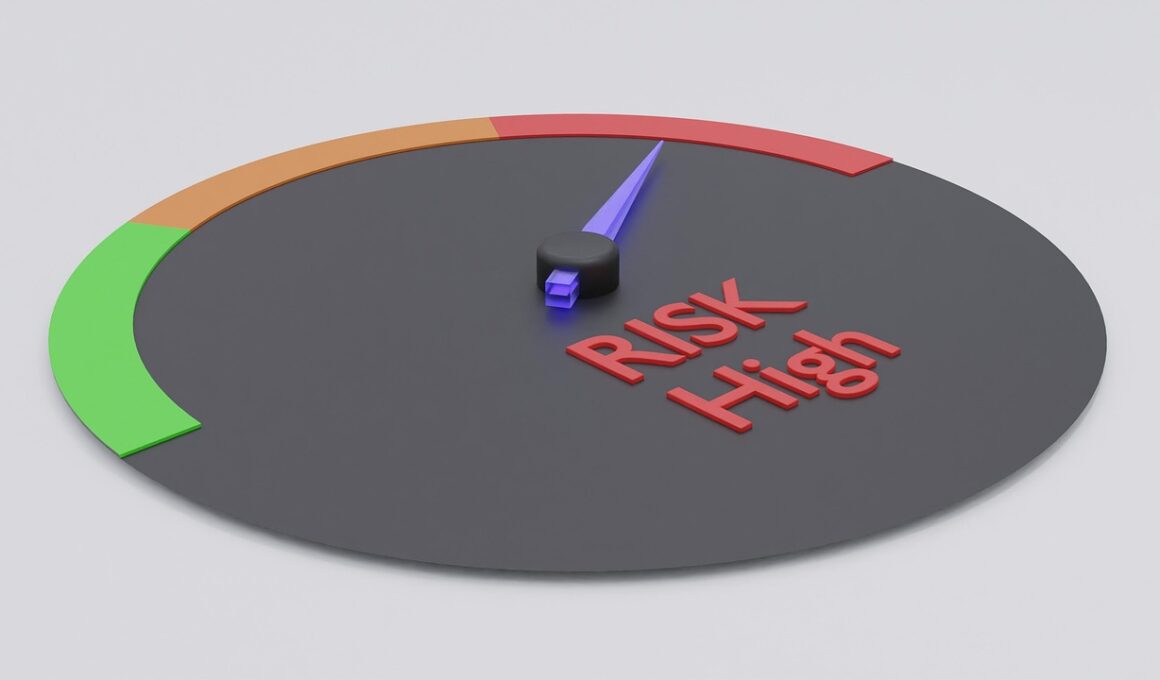Understanding Risk Appetite Frameworks: A Comprehensive Guide
Risk appetite frameworks serve as vital tools for organizations aiming to translate their broad strategic objectives into actionable risk management practices. Establishing an efficient framework is essential for businesses to identify how much risk they are willing to accept in pursuit of their goals. This involves a thorough analysis of both internal and external factors influencing their operations. A common challenge faced during this process is aligning the organization’s risk tolerance with its overarching corporate strategy. Effective risk appetite frameworks should integrate clearly defined roles, continuous monitoring, and seamless communication among all stakeholders. Organizations typically adopt a structured approach that embraces varying risk categories, ensuring every level of risk is appropriately assessed and documented. Additionally, transparency around decisions made helps cultivate a culture of accountability, where every team member understands their impact on the organization’s overall risk profile. Ultimately, a sound risk appetite framework empowers organizations to navigate uncertainties, thereby balancing potential rewards against acceptable risk levels. By implementing these strategic measures, businesses can bolster their resilience, ensuring they remain agile in a constantly changing environment while pursuing their long-term goals.
The Components of a Risk Appetite Framework
A well-structured risk appetite framework comprises various crucial components that shape its effectiveness. First, it requires the definition of risk appetite, which represents the amount and type of risk an organization is prepared to pursue or retain. This is often communicated in clear terms to ensure consistency across the organization. Second, organizations must establish risk tolerance levels, which provide quantifiable limits within which risks can be taken. These levels serve as guidelines for decision-making processes within various operational units. Additionally, the framework should incorporate governance structures designed to oversee the management of risks. This includes assigning accountability to specific individuals or committees, thereby developing a robust culture around risk management. Third, effective communication strategies are crucial for disseminating risk appetite and tolerance levels throughout the organization. Regular training and workshops can foster a shared understanding among employees. Finally, ongoing assessment and review processes are pivotal in adapting the framework to evolving external conditions and internal changes. This holistic approach ensures that the risk appetite framework actively supports organizational objectives while facilitating sustained growth and adaptability.
Establishing a risk appetite framework involves several key steps that help organizations define the level of risk they are comfortable with. Initially, the assessment of the organization’s strategic goals is crucial as these will directly influence the risk appetite. Engaging stakeholders across various ranks is imperative to gather diverse perspectives, which contribute to a more holistic view. Analyzing historical data can provide insights into past risk management failures and successes, informing future decisions. Once a draft of the framework is created, it should be reviewed and approved by senior management to ensure alignment with the overall business vision. Implementation is then executed with clear communication to reinforce understanding and commitment across the organization. Monitoring systems must be integrated to track the effectiveness of the framework over time, allowing for adjustments in the context of changing circumstances. Regular audits and reviews can aid in reaffirming the framework’s relevance and practicality, fostering a proactive risk culture. Encouraging open dialogue about risk perceptions and experiences contributes significantly to maintaining an engaging environment focused on continuous improvement and mastery of risk management.
Challenges in Implementing Risk Appetite Frameworks
While implementing a risk appetite framework is essential, organizations often encounter several challenges during this process. One significant challenge is the cultural disparity across different business units. Each department might have varying perceptions of risk, complicating the establishment of a unified framework. Additionally, resistance to change is common, as employees may feel apprehensive about new policies or practices that could affect their workload. Addressing these concerns requires effective change management strategies and engaging communication to illustrate the benefits of the framework. Another challenge lies in the quantification of risk appetite. Many organizations struggle to articulate and measure their risk appetite in tangible terms, creating ambiguity. This necessitates the development of clear metrics that can translate abstract concepts into measurable values. Additionally, insufficient monitoring processes can lead to deviations from the established risk appetite, ultimately resulting in suboptimal outcomes. Thus, ongoing assessments and adjustment mechanisms are vital for maintaining alignment with the specified appetite. Training and support structures must also be robust to equip employees with the skills necessary to navigate challenges, ensuring the successful implementation of the framework.
Effective risk monitoring is integral to the success of a risk appetite framework, providing necessary insights into its operational viability. Regular monitoring involves the continuous evaluation of risk exposures in relation to the defined risk appetite. This includes establishing key risk indicators (KRIs) designed to facilitate timely detection of deviations from risk thresholds. Organizations often utilize tools and technology to automate reporting, enhancing the ability to track risks effectively. Furthermore, conducting periodic reviews allows businesses to assess whether their risk appetite remains appropriate based on current operational landscapes or shifts in strategic objectives. Also, regular engagement with stakeholders facilitates communication regarding emerging risks and possible adjustments to the framework. This proactive approach ensures that both risk appetite and monitoring processes evolve as needed. Establishing a feedback loop helps organizations to learn from past experiences, enabling continuous improvement in managing risks. In an ever-evolving market, adaptability becomes a hallmark of resilience. Organizations that embrace rigorous monitoring processes can respond promptly to risks, ensuring that they remain aligned with their set appetite while safeguarding their overall strategic objectives.
The Role of Governance in Risk Appetite Frameworks
Governance plays a pivotal role in the effective implementation of risk appetite frameworks, providing the necessary structure for oversight and accountability. A well-defined governance framework outlines the roles and responsibilities of various stakeholders in risk management processes. This includes senior management’s responsibility to set and approve the organization’s risk appetite, as well as the responsibilities of risk committees tasked with monitoring adherence to established parameters. Moreover, the governance framework should facilitate information flow, ensuring that pertinent risk information reaches decision-makers. Strong leadership encourages a culture of risk-awareness, where employees are motivated to adhere to the established appetite. Regular reporting mechanisms are vital for maintaining transparency and accountability, enabling organizations to promptly identify issues. It is also essential to have an escalation process for instances when risk exposures exceed defined thresholds, ensuring timely corrective actions. Integrating the governance structure with existing business processes is crucial, strengthening the overall risk management framework. Ultimately, effective governance leads to improved decision-making and resilience, equipping organizations to face challenges while remaining true to their risk appetite.
Incorporating feedback into the risk appetite framework is essential for refining processes and enhancing its effectiveness over time. Employees at all organizational levels possess valuable insights into the practical challenges associated with the framework’s implementation. Encouraging regular feedback sessions can stimulate discussion about the framework’s real-world applications and identify areas that require adjustment. The feedback process should be structured, utilizing surveys or focus groups to facilitate organized discussions. Moreover, integrating lessons learned from risk events can enhance the framework by addressing specific limitations. Assessing the framework’s adaptability based on feedback enables organizations to remain agile in uncertain environments. Furthermore, communication regarding implemented changes promotes transparency and demonstrates the organization’s commitment to continuous improvement. Celebrating successes tied to the framework illustrates its value and encourages a culture of openness regarding risks. Overall, an iterative feedback mechanism not only refines the framework but also strengthens stakeholder engagement, fostering a collaborative approach. By actively soliciting and incorporating feedback, organizations can ensure their risk appetite frameworks remain relevant, effective, and aligned with evolving objectives.
Conclusion on Risk Appetite Frameworks
In conclusion, risk appetite frameworks are indispensable in guiding organizations towards balanced risk-taking aligned with their strategic objectives. The importance of clearly articulated risk appetite and tolerance levels cannot be overstated, as they directly influence decision-making processes at every level. Throughout the implementation journey, organizations face challenges that necessitate robust governance structures and effective communication strategies. Continuous monitoring and the integration of feedback allow businesses to refine their frameworks, ensuring relevance in constantly evolving environments. When stakeholders engage with these frameworks meaningfully, most organizations foster a culture that embraces risk management as a core component of their strategic planning. This cultural shift cultivates resilience, empowering organizations to navigate uncertainties while seizing opportunities for growth. Ultimately, as businesses enhance their understanding of risk appetite frameworks, they will not only mitigate potential threats but also position themselves to achieve long-term success. By proactively managing risks, organizations can confidently pursue their goals, translating well-defined risk appetites into tangible results. This comprehensive approach enhances their ability to thrive, even amidst challenges, fostering a sustainable business model in today’s dynamic economic landscape.


